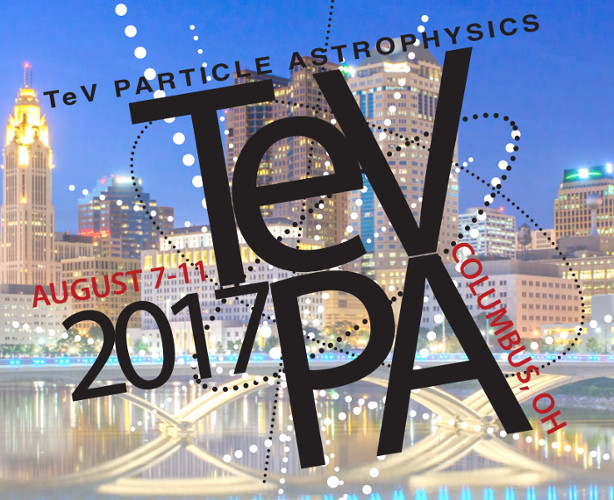Speaker
Description
Several starburst galaxies have been observed in the GeV and TeV bands; in this
regime, gamma-rays are mainly produced by cosmic-ray interactions with the interstellar medium ($p_{\rm cr}p_{\rm ism} \to \pi^{0} \to \gamma\gamma$). Furthermore, the dense environments of starbursts may act as proton "calorimeters" where collisions dominate losses, so that a substantial fraction of cosmic-ray energy input is emitted in gamma rays. Here we build a one-zone, "thick-target" model implementing calorimetry and placing a firm upper bound on gamma-ray emission from cosmic-ray interactions. The model assumes that cosmic rays are accelerated by supernovae, and all suffer nuclear interactions rather than escape. Our model has only two free parameters: the cosmic-ray proton acceleration energy per supernova $\epsilon_{\rm cr}$, and the proton injection spectral index $s$. We calculate the pionic gamma-ray emission from 10 MeV to 10 TeV, and derive thick-target parameters for six galaxies with Fermi, H.E.S.S., and/or VERITAS data. Our model provides good fits for the M82 and NGC 253, and yields $\epsilon_{\rm cr}$ and $s$ values suggesting that supernova cosmic-ray acceleration is similar in starbursts and in our Galaxy. We find that these starbursts are indeed nearly if not fully proton calorimeters. For NGC 4945 and NGC 1068, the models are consistent with calorimetry but are less well-constrained due to the lack of TeV data. However, the Circinus galaxy and the ultraluminous infrared galaxy Arp 220 exceed our pionic upper-limit; possible explanations will be discussed.




